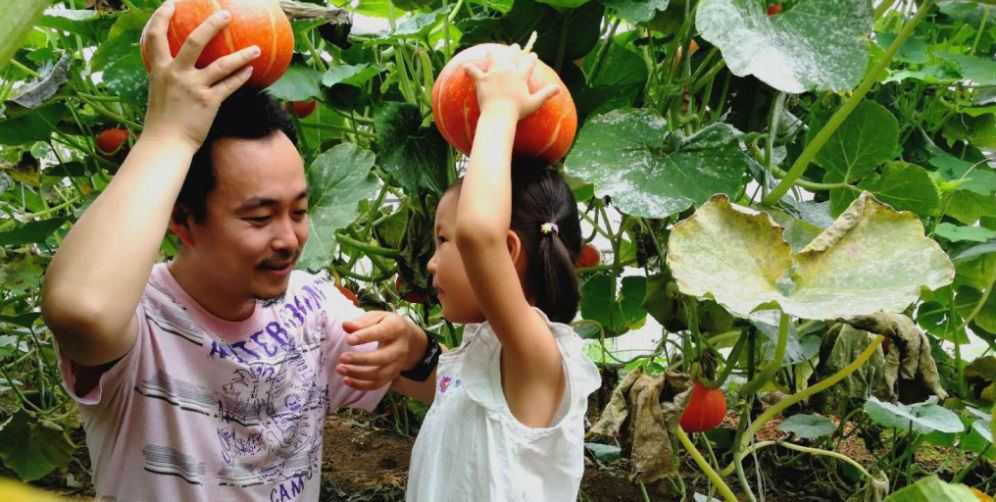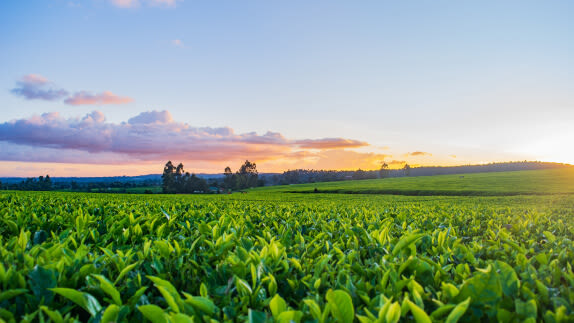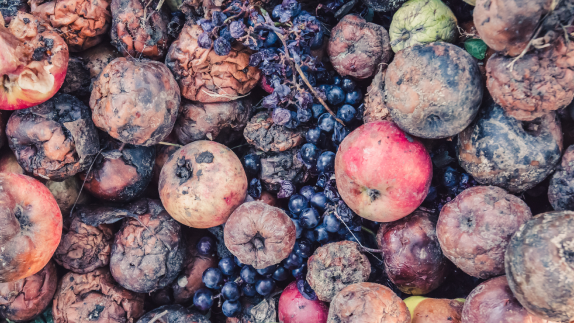“Food is the paramount necessity of the people (民以食为天)”. This ancient saying highlights the role of food in Chinese society throughout history, as not only a necessity but also a connector of people. Traditional festivals, where local food always takes the centre stage and signifies prosperity, are emblematic of this: dumplings for the Lunar New Year, mooncake for the Mid-Autumn Festival, Zongzi for the Dragon Boat Festival.
Because of this, establishing a resilient food system has long occupied the uppermost political agenda in China, and the country has achieved a high level of self-sufficiency on grains, with staple reserves enough to feed its 1.4 billion people for 9 months in case of emergency. In addition, since 1988, China’s Ministry of Agriculture has run the ‘Vegetable basket’ programme, which mandates that city mayors are responsible for providing affordable and safe non-grain foods to citizens, including meat, eggs, dairy, seafood, and vegetables. Its primary goal has been to ensure food supply and diversity in all seasons and establish an active market-driven system for food provision. Some cities have also set goals for self-sufficiency in different food categories, and major cities have farmland reserves in the peri-urban area to ‘store food in the land’.
These measures have proven to be beneficial to secure food supply when facing the Covid-19 crisis. Responding to the outbreak of the pandemic in the Wuhan municipality and surrounding Hubei province — where the first cases of the Covid-19 virus were detected — the central government quickly organised nearby provinces to send vegetables to Hubei and mobilised food reserves to aid the region.
However, lockdown measures to prevent the spread of the virus resulted in restaurants and food trade markets being shut down, and large amounts of perishable food being wasted due to having no consumer outlet. China’s main food providers, which are smallholder farmers, struggled to access the consumer market directly due to their relatively small volumes of production, having to pass through multiple middlemen, from local aggregators to wholesalers and retail markets.
With vulnerabilities in the system exposed, actions have been taken in China to shore up food supply and ensure it can be accessed by citizens. Digital business models have been leveraged to connect people with agricultural supply chains and to minimise food loss and waste, and local governments have acted to support farmers while promoting consumption of foods with high nutritional value.
Improving access and designing out waste
These immediate responses to the impacts of Covid-19 are equally critical steps towards the creation of a more resilient food system in China long term. Building on digital solutions that have provided access to food during the pandemic offers opportunities to develop effective agricultural supply chains and design out loss and waste of food in the system: two of five key opportunities to create a resilient circular economycircular economyA systems solution framework that tackles global challenges like climate change, biodiversity loss, waste, and pollution. It is based on three principles, driven by design: eliminate waste and pollution, circulate products and materials (at their highest value), and regenerate nature. for food in the country, as outlined in The Circular Economy Opportunity for Urban and Industrial Innovation in China.
During pandemic lockdowns, digital business models have provided fresh produce through online markets, with e-commerce giants in China experiencing a surge in customers. This includes the JD Group, which saw produce sales increase by 470% compared to 2019, as well as smaller retailers that have either joined large existing online platforms or have invested in the development of their own food delivery services to local neighbourhoods.
Mayors within the Hubei province joined forces with Pinduoduo — one of China’s largest e-commerce platforms — to create a livestream channel to provide access to their regional produce, including rice, lotus root, oranges, and tea. The high-profile political figures involved in the broadcast acted to trigger people’s interest as well as providing the “Mayor’s guarantee” of the quality of the products. This channel reached 150 million views in April and garnered high sales, with the mayor of Jingshan selling more than 15,000 kilograms of Jingshan rice within half an hour. Viewers spent more than RMB 1.2 million (EUR 152,000) on spring tea and hundreds of millions of renminbi on foodstuffs from the region via the livestream channel.
Other e-commerce and social media giants, such as Taobao, JD, and TikTok, have opened similar channels for people around the country to contribute to Hubei’s recovery by purchasing its agricultural products. Logistics service providers like China Post and Shunfeng have established special delivery and storage capacities to support these online sales activities. Such optimisation of food storage, transport, and processing is an essential part of designing out food loss from the system and thereby working towards a circular economy where no food is wasted. By connecting consumers directly to food sources, these new models have not only ensured consumers’ access to food but also reduced the complexity and inefficiency in the traditional supply chain, preventing issues such as overstocking.
Building local connections
These models are not without shortfalls, however. One issue with online sales of produce in China, and elsewhere, is food miles. Fresh produce travelling long distances often requires more packaging, emits more greenhouse gases, and can also lead to local produce being wasted. While online marketplaces have helped connect people with food sources across China, local producers may not have any advantage in the competitive online space. Purchasing of common crops from small producers online has been beneficial to some while others have been less fortunate, and a clear case is now being made for future solutions to be more local, inclusive, and distributive.
Connecting consumers to local regenerative food networks plays a crucial part in achieving this, acting to safeguard food producers from future shocks — health, climate, economic — while addressing environmental impacts of the current food system, and providing consumers with access to food that is safe and high in nutritional value. Consumer trust in the current food system in China is not always present especially when it comes to heavy metal elements and pesticide residues in produce, but the emergence of Community Supported Agriculture (CSA) initiatives in the last decade are beginning to establish this missing link. Community Supported Agriculture (CSA), as indicated in its name, connects customers with food producers to establish local organic food systems, with many working towards regenerative practices in order to improve soil health. CSA aims to build communities that reinforce food consumption patterns that are beneficial to health and environment, moving towards a circular economy for food. CSA acts as a long-term equivalent of the ‘Mayor’s guarantee’ that emerged during the pandemic, assuaging concerns about how food is grown and processed by providing transparency.

The future genuinely lies in building stronger short food supply chains that allow local food sovereignty and traceability.
International Network URGENCI
Spearheaded in China by a group of smallholder farmers, the leading figure of the movement in China is Dr Shi Yan. Since she started her social enterprise ‘Shared Harvest’ in the peri-urban area of Beijing in 2012, nearly 1,500 CSA farms have emerged all around the country serving more than 450,000 customers. The model requires customers and farmers to share the risks and benefits of food production. Customers (known as members) pay a subscription fee upfront to support the farmers who grow their food; in return, they have access to reliable and healthy food products all year long, as well as being able to visit the farms and learn about regenerative farming practices. As these farms are often located in the peri-urban area, a farm to table model is made possible, ensuring more fresh food is available with fewer additives and less packaging.
Dr Shi’s farms have seen steady growth in recent years with members now numbering in the hundreds. The CSA model’s resilience to shocks, as well as its economic and social potential, have been highlighted during the Covid-19 pandemic, with their farms becoming known as a reliable channel of food supply. Dr Shi’s farms normally also generate revenue from farm-based leisure and educational activities. While these have not been feasible due to social distancing requirements, an increase in online sales of 300% in January has made up for the loss.
Leveraging the growth of online business models is crucial to scale CSA and realise its potential to create a circular economy for food that is regenerative and restorative. As Dr Shi noted in a recent interview, just “five CSA members joining could clean 1 Mu (0.07 hectares) of soil, 10 could enable a farmer to grow organically, 100 could keep the youth in the countryside, and 1,000 could revitalise a village financially and ecologically.” Besides providing social value, the CSA model also serves to cultivate community connections instead of focusing on maximising profit in a way that is more often found to damage biodiversity and degrade natural capital. Trusting customers are more likely to accept a variety of food that may not reach the aesthetic market standards but comes from a reliable, responsible, and regenerative source.
The CSA model supports China’s goal of revitalising its countryside and balancing urban and rural development. China’s growing urban middle class demands not only better and more diverse foodstuffs, but also leisure activities that allow them to reconnect with nature. The peri-urban area has the potential to address both needs while allowing food producers and retailers to maintain profits. To develop this model further and fully realise a circular economy for food in China, there is the opportunity to use urban food waste and wastewater to regenerate the soil in peri-urban and rural environments. As Chinese cities are implementing municipal waste sorting schemes, achieving local closed nutrient loops could be achieved in the near future.






